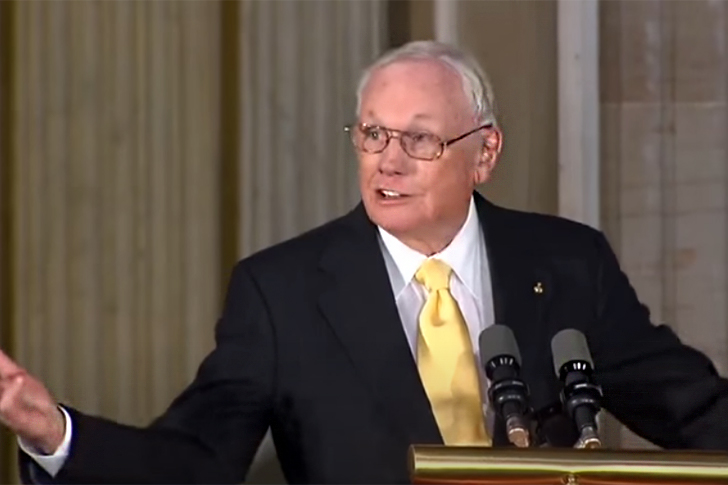Neil Armstrong – The First Man to Walk on the Moon

Former astronaut Neil Armstrong holds one of the greatest distinctions in the world. He may not be the wealthiest man out there, but there are no other people out there who would be able to say that they have achieved what he has done. After all, Armstrong is the first man to walk on the moon! Most of us are familiar with his famous words, “One small step for man, one giant leap for mankind”, not everyone knows of all the other credit he has achieved in the field.
Shall we get to know him a bit more?
Neil Armstrong’s Early Beginnings
From 1949 to 1952, Armstrong served as a naval aviator. Three years later, he found himself part of NACA or the National Advisory Committee for Aeronautics. He would spend the next 17 years with them, working as an engineer, test pilot, administrator and astronaut. NACA, as you might already know, would be succeeded by what we know now as NASA or the National Aeronautics and Space Administration.
While working as a research pilot for NASA’s Flight Research Center, he would help develop and pioneer many high speed aircrafts. This includes the famed 4000-mph X-15. Over the course of his career as a pilot, Armstrong has flown a great degree of aircraft types, ranging from jets, helicopters, rockets, and gliders.

Neil Armstrong and the Moon Landing
It was in 1962 when Armstrong was made an astronaut. He was assigned as the commanding pilot when it come to the Gemini 8 mission, which was launched on the 16th of March, 1966. Did you know that he also gets recognition for being the first to successfully dock two vehicles in space? Even back then, his skill at the job was already apparent.
He would later make history again as the commander of Apollo 11. The Apollo is the first manned lunar landing mission and its crew became the first humans to arrive on the moon. NASA’s investments toward this moment certainly paid off. They couldn’t have chosen a better man to represent mankind’s first step into this entirely new frontier. The video of the moon landing was shown all over the United States and across the globe, making him a hero to many.

Life After Apollo 11
If you thought he retired after leading such an adventurous life, you are mistaken. In the years after the successful Apollo 11 mission, Armstrong served as the Deputy Associate Administrator for Aeronautics at NASA Headquarters in Washington D.C. His job was to manage and coordinate all the research and tech NASA does for aeronautics.
Before online classes were even a concept, Armstrong spent time working as a Professor of Aerospace Engineering for the University of Cincinnati from 1971 to 1979. Later on, he moved to a more civilian position, and was chairman for Computing Technologies for Aviation from 1982 to 1992. Did you know that aside from receiving a Bachelor of Science in Aeronautical Engineering from Purdue University, Armstrong also holds honorary doctorates, which he received from different universities throughout the years?

His contributions didn’t begin and end with his work as an astronaut for NASA. For a period of time, he served as a member of the National Commission on Space and later on, as Chairman of the Presidential Advisory Committee for the Peace Corps. He also received credit as the Vice-Chairman of the Presidential Commission tasked to investigate what had happened during the space shuttle Challenger accident.
Armstrong has also received recognition from around the world. He is among the most decorated astronauts, who has been given honors such as the Presidential Medal of Freedom, the Explorers Club Medal, the Congressional Space Medal of Honor, the Royal Geographic Society’s Gold Medal, the Federation Aeronautique Internationale’s Gold Space Medal, and the Octave Chanute Award, among many others.
Neil Armstrong passed away on August 25th 2012, but his legacy and the degree of his contributions to space exploration will live on.
Photo Sources:
Cover – NASA,
Photo #1 – NASA,
Photo #2 – YouTube / Newsy,
Photo #3 – NASA

Recent Comments